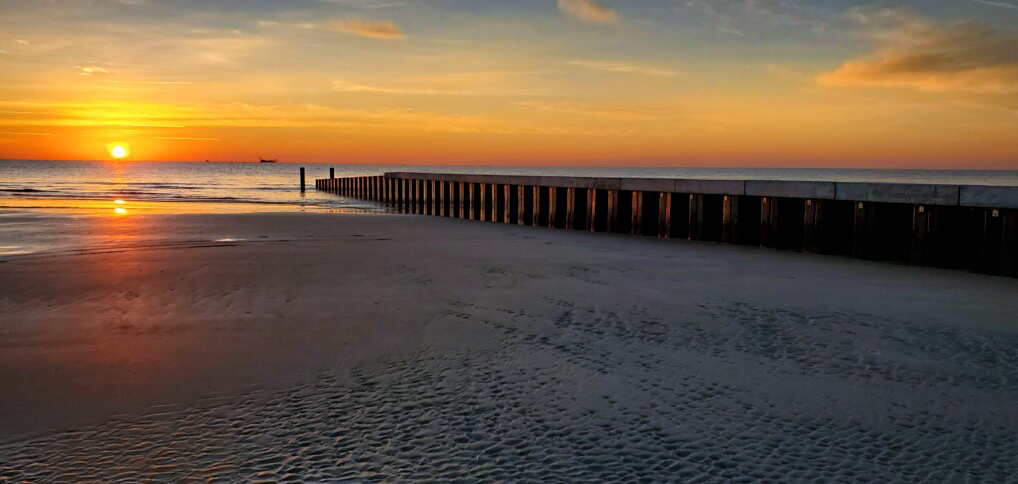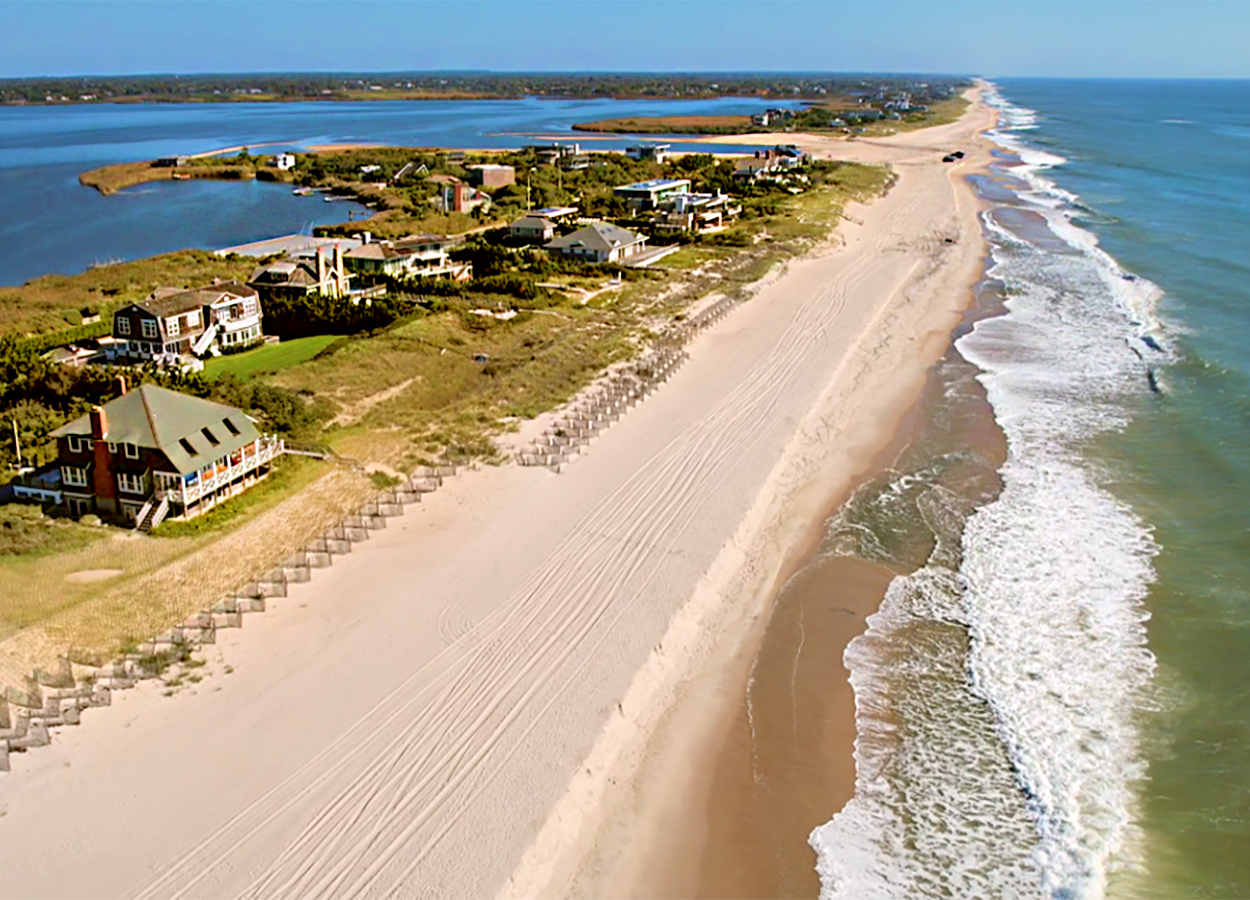
Great Lakes Dredge and Dock Company (GLDD – Oakbrook IL) began pumping the 8th nourishment project along Hunting Island on 4 February. GLDD’s cutterhead dredge, Alaska, was towed into place two miles offshore of the lighthouse this week and will pump 1,170,000 cubic yards (cy) of sand to the beach in the next two months. The project will add new sand from the South Beach recreation area to the old campground at the north end of the island and widen the beach by an average of over 140 feet (ft).
In addition to nourishment, SJ Hamill Construction Company (Charleston SC) is installing two new groins to reduce sand losses between North Beach and South Beach. One of the groins (#5A) will be constructed midway between groin #4 at the Lighthouse and groin #5 at South Beach. The other new groin (#3) will be installed at about 1,200 ft north of the Lighthouse.
The project is expected to provide a continuous, safe swimming beach between the two primary parking areas and help the Department of Parks Recreation and Tourism (PRT) accommodate many more visitors. The south end of Hunting Island will continue to erode and provide the classic vistas of downed trees and salt-bleached driftwood that is a signature experience in the park.
This is the first beach restoration along Hunting Island since 2006 when ~644,000 cy was pumped ashore and used to create a platform for construction of six groins. Before that project, Hunting Island had been nourished every five years or so, but without groins to slow sand losses, the shoreline eroded by more than 20 ft per year. Erosion slowed considerably in the areas protected by groins but continued to lose sand. Hurricanes Matthew (2016) and Irma (2017) were particularly devastating, forcing the closure of the campground at the north end.
So to put the project in perspective, consider some interesting facts:
- Hunting Island was nourished four times by the US Army Corps of Engineers between 1968 and 1980, adding over 3.5 million cy.
- The largest federal nourishment (1980) added approximately 1,400,000 cy using borrow sand from the North Shoal of Fripp Inlet. So the present project at approximately 1.2 million cy will be approximately 85% of the size of the 1980 nourishment. All the other nourishment events have been under approximately 760,000 cy.
- The 1991 nourishment (757,644 cy) was the first involving an offshore borrow area that was not a primary shoal of Fripp Inlet or Johnson Creek Inlet. It was also constructed by GLDD using the cutterhead dredge, Georgia.
- GLDD returned to Hunting Island for the 2006 nourishment using the dredge, Illinois. While there is a new generation of personnel on the present project, we expect to see many familiar faces as CSE has worked with GLDD on over two dozen nourishment projects.
- SJ Hammill has already driven sheet pile for the two new groins and expects to have most of their work completed before nourishment covers the structures. They are using a high strength composite material for the sheets instead of steel to avoid corrosion effects. Another change that will be apparent is the precast concrete caps which will produce a more uniform appearance that blends with the beach and add stability to the structures.
- Four of the existing groins (#4, 5, 6, and 7) will receive new concrete caps to replace the corroded steel channel caps from 2007.
- The new groins will be similar in profile to the existing groins and generally follow the natural slope of Hunting Island beach to the low tide terrace. Large quarry stone imported from Augusta will be placed on stone mattresses around the ends of each structure to protect the most vulnerable parts from scour and wave action.
CSE is proud to be part of the team that is implementing the Hunting Island project. We look forward to seeing the restored beach crowded with visitors later this spring




